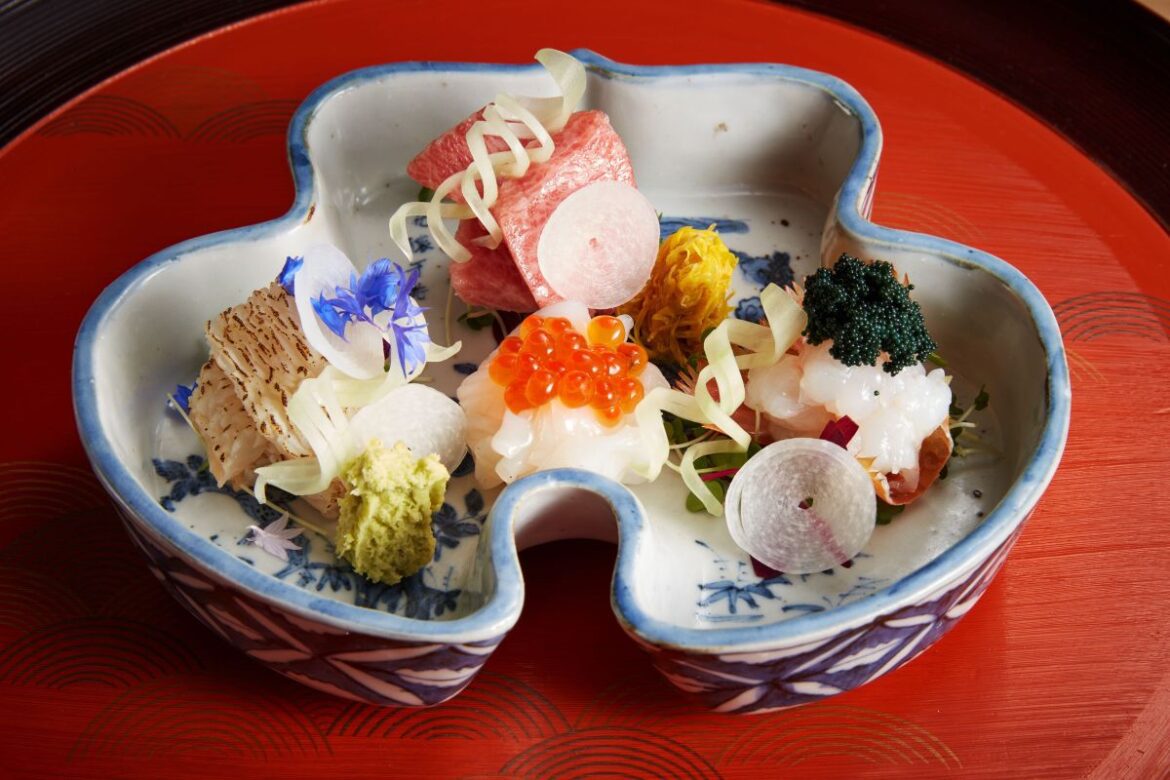Tucked away near Marble Arch, Roketsu is a portal to Kyoto hidden in the heart of London. Chef Daisuke Hayashi, a master of traditional kaiseki cuisine, has brought his meticulous craftsmanship and deep respect for seasonality to this intimate dining space. Trained at Kyoto’s three-Michelin-starred Kikunoi and entrusted with curating menus for Japan Airlines’ first-class dining, Hayashi is a custodian of Japan’s culinary heritage.
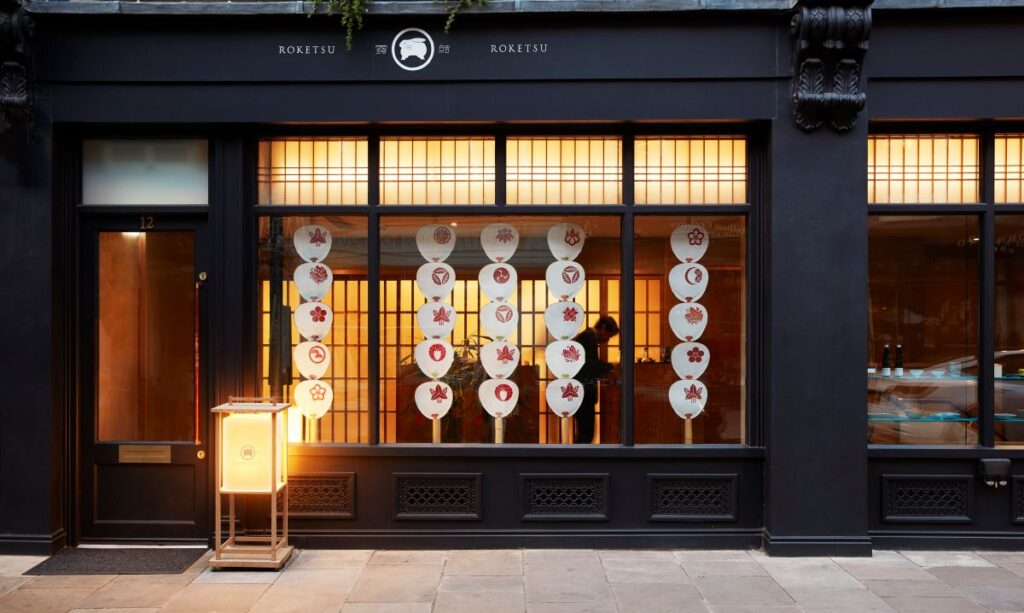
Kaiseki is the pinnacle of Japanese dining, a multi-course experience that blends seasonality, aesthetics and technique into a carefully orchestrated culinary journey. Originating in the 16th century, kaiseki was initially a simple meal served to accompany the formal tea ceremonies, later evolving into an art form enjoyed by aristocrats and refined diners. Each dish is designed to highlight the natural flavours of its ingredients, with an emphasis on balance, harmony and fleeting seasonal beauty. More than just a meal, kaiseki is a reflection of Japanese culture with its reverence for nature, craftsmanship and the passage of time.
Stepping through the discreet entrance, I found myself enveloped in the serene beauty of a traditional tea house; sliding screens, muted white lighting, and the subtle scent of wood furniture, which immediately took me back to our trip to Kyoto last summer. In fact, Roketsu refers to a rabbit in a parable by a Chinese philosopher, which was referenced in a historical tea room opened by 17th century teamaster Koburi Enshu. Roketsu use this rabbit as their logo, which reminded us of the Okazaki-jinja rabbit shrine next to where we were staying at the Hotel Okura Kyoto Okazaki Bettei. There is traditional counter seating, but also a lounge downstairs with low chairs and a more opulent atmosphere.
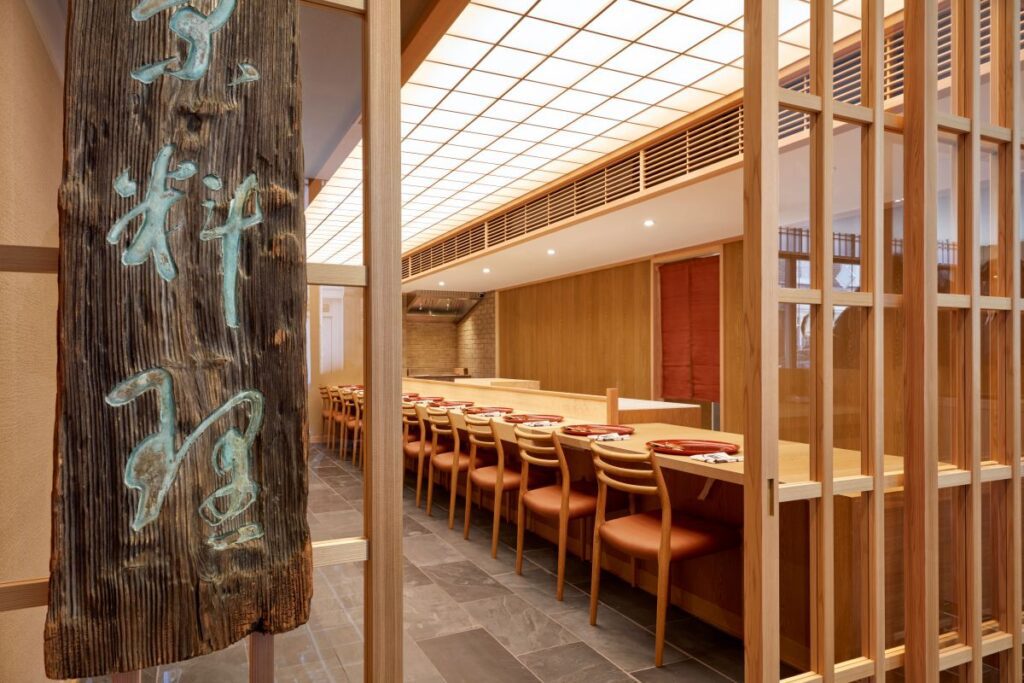
We visited Roketsu for the Shinnen Tasting Menu, a celebration of Osechi-ryōri – the symbolic dishes traditionally eaten in Japan at the start of the new year. Each course was an ode to renewal, prosperity, and the changing seasons, presented with exquisite precision. Our meal began with a warm cloth to allow us to prepare for dinner and a shallow dish of cherry-infused sake, served by the charming Head Sommelier, Ryosuke, whose knowledge of the wines that followed was fascinating.
Sakizuke: A Delicate Beginning
The first course consisted of a small but striking dish: Sekihan-mushi, a traditional red bean sticky rice, symbolizing luck and prosperity. Atop soft grains in an ornate little bowl, sat a generous mound of creamy sea urchin, its briny richness heightened by the umami depth of a dashi-soy glaze. A dab of wasabi added a fresh contrast, making each bite a perfect balance, especially when paired with the Edo Kaijyo sake, brewed in the centre of Tokyo by a producer who strives to reduce water consumption in their processes, to the extent that the water used comes from the tap!
Hassun: A Decadent Tableau
The Hassun course, a curated selection of seasonal appetizers served in a wooden box, was as much an aesthetic masterpiece as it was a culinary one. Arranged with the precision of a winter landscape painting, each element represented a different facet of the season and we were also presented with an artistic representation of the course, labelled so that we could identify each delicious component and the symbolism.
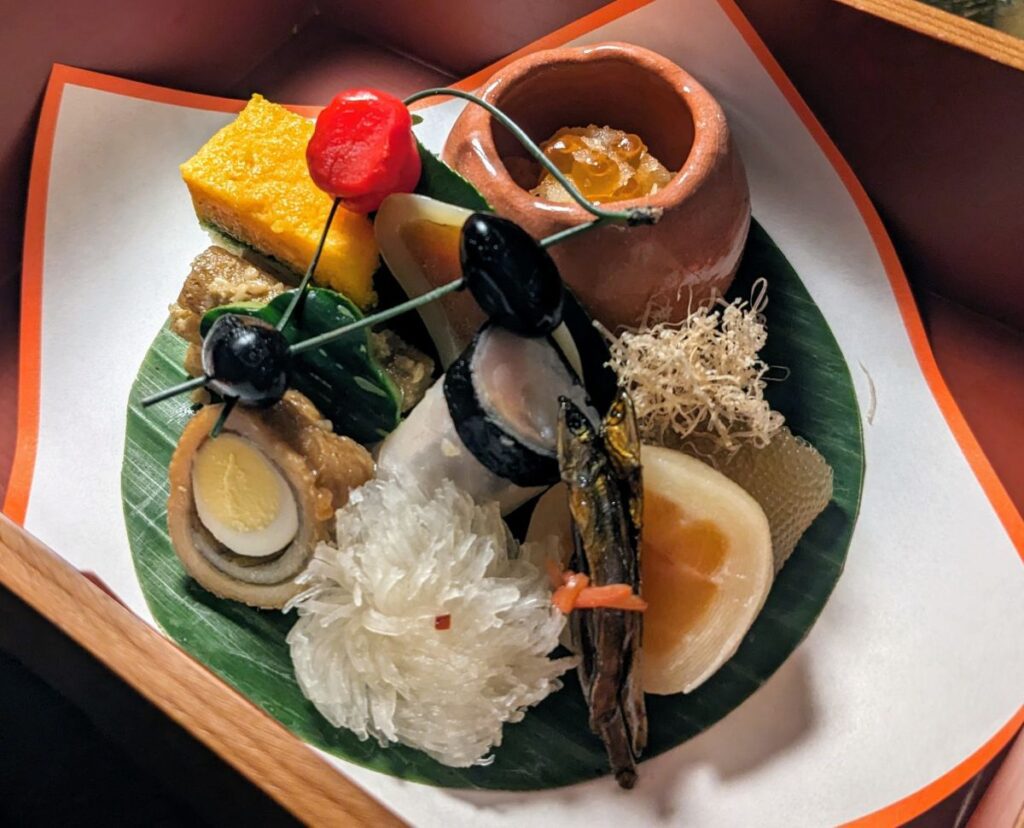
Each mouthful holds special significance and wishes for the new year; for example, a piece of turnip shaped like a chrysanthemum represents hopes for longevity and promotion! Bottarga wrapped in squid and shimmering herring roe brought flavours of the sea, while the soy-caramelized sardine and crisp burdock offered a sweetish contrast. Black beans – a symbol of good health – were glossy and sweet, looking like polished stones or shiny black cherries arranged on top of the dish.
Among the more luxurious bites, the mackerel senmai-sushi, neatly layered with rice, and the smoked salmon kinuta-maki, elegantly wrapped with thin slices of daikon, stood out as deeply satisfying. Every bite was a small revelation, each flavour carefully layered and sumptuously presented.
Yakimono: Fire and Smoke
For the Yakimono course, a charcoal-grilled half-lobster arrived, its flesh topped with the earthy and complex binchotan charcoal. A dusting of bottarga powder added a subtle salinity, enhancing the lobster’s natural sweetness without overpowering it. Thoughtfully pre-cut into bitesize pieces to allow for straightforward chopstick manipulation, the charred edges way to a juicy bite.
The wine which was paired with this course was possibly my favourite of the meal (usually writing this means I’ll be trying to track it down to add to my collection at home!). This Pernand-Vergelesses white Burgundy 2021 from Jean-Baptiste Boudier was aromatic, with apple notes and a little stone fruit, well-balanced with a minerally finish.
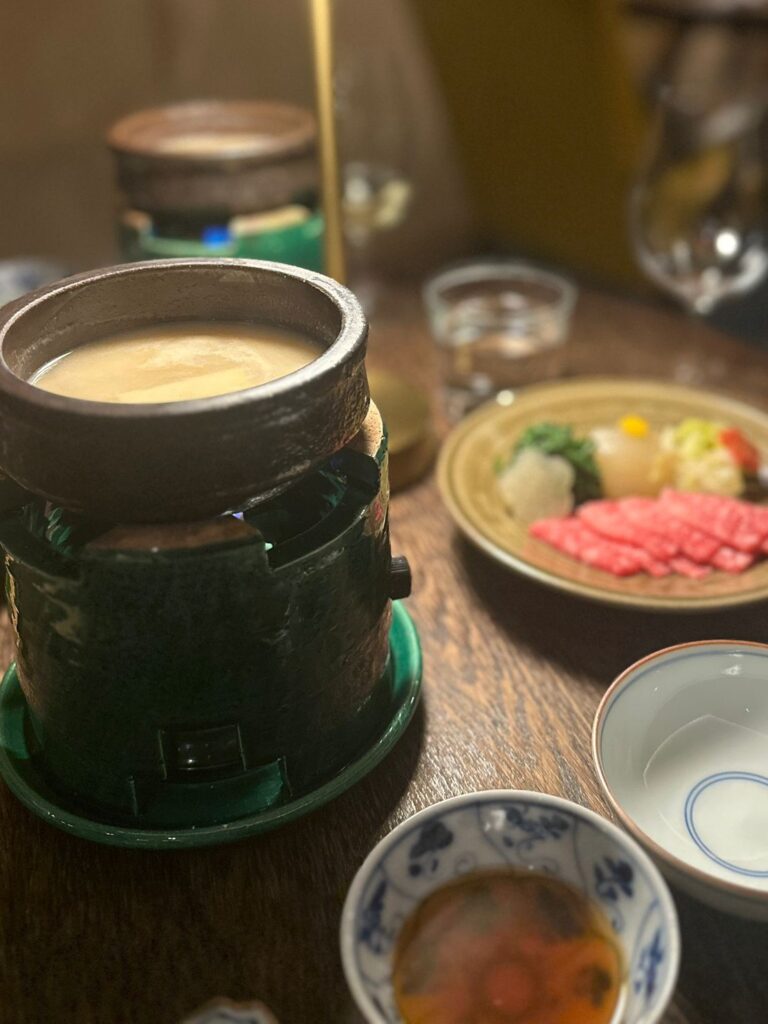
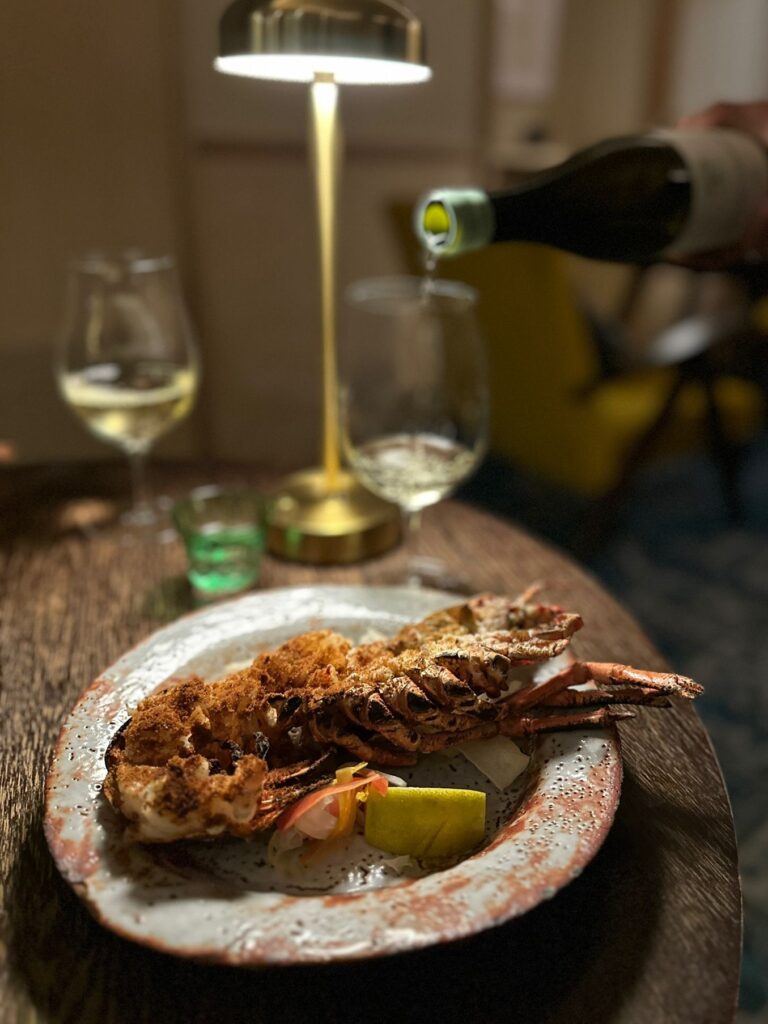
Shiizakana: Roketsu’s Hearty Hotpot
The Sakekasu-nabe, a hot pot simmering with sake lees broth, was the kind of dish that makes you sigh in contentment. Wafts of gentle warmth rose from the pot as we dipped slices of wagyu beef into the steaming broth, their marbled fat melting into the liquid with each swish. Accompanied by intricately shaped seasonal vegetables that soaked up the velvety, umami-laden broth, this was a dish that felt deeply nourishing – a big edible hug that still felt like January’s healthy eating intentions were intact. We moved to a red for this course, a Chassagne-Montrachet from Mark-Antonin Blain, which had just enough pepperiness to accompany a red meat, without overwhelming the subtlety of the broth.
Sushi: A Study in Indulgence
No kaiseki meal would be complete without sushi and here it came in the form of yellowtail sushi rolls with a hefty shaving of truffle. Served alongside was a Jerusalem artichoke soup and a small dish of pickled vegetables to cleanse the palate. The fish was so fresh it melted in the mouth and the earthy aroma of the truffle was beautifully matched with a British sparkling wine: Black Chalk’s 2020 Paragon, which had my taste buds tingling!
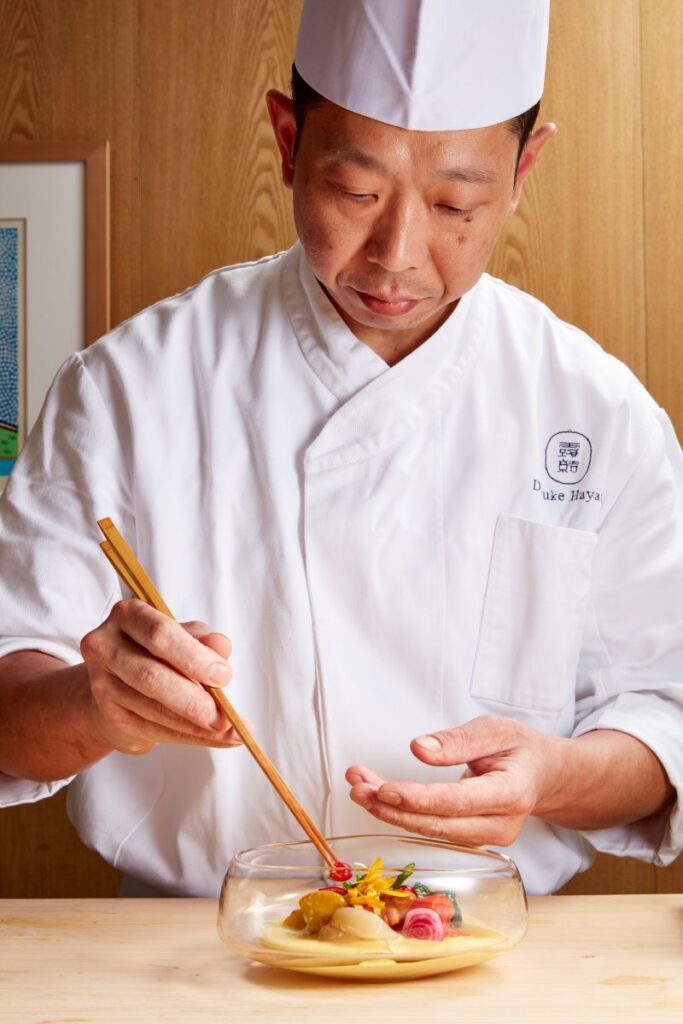
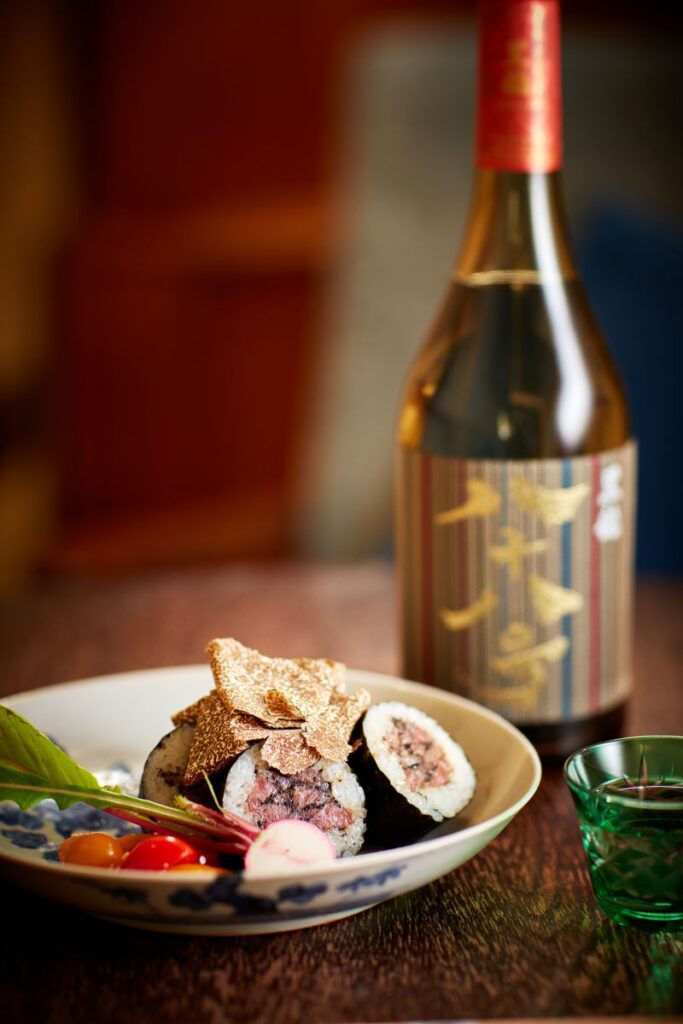
Dessert: A Delicate Farewell
To close, a jewel-like fruit jelly arrived, accompanied by a pink grapefruit sorbet. Light, refreshing, and tinged with just the right amount of tart bitterness, it was the perfect continuation of the delicacy of preceding courses. The sorbet’s sharp citrus edge cleansed the palate, while the fruit jelly provided a sweet conclusion to this artistic masterpiece.
As we stepped back out into the London night, it was with a sense of quiet reverence. Roketsu had transported us – if only for a few hours – to the heart of Kyoto, offering a dining experience that was as much about contemplation as it was about flavour. A meal here is not just food – it’s a meditation on time, tradition and the fleeting beauty of the seasons. Roketsu’s Shinnen New Year menu left us not just satisfied, but thoughtful, and full of hope for what the new year will bring.
Roketsu
12 New Quebec Street
London
W1H 7RW
United Kingdom

